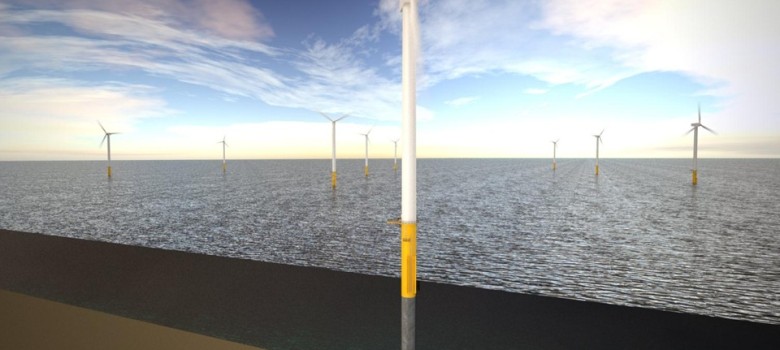
State of Wind Power in the UK
According to RenewableUK, there are now 370 wind farms in the UK, providing just under 20,000,000,000 KWh of electricity to the grid each year. Based on an average house using 4,500 of electricity per year, 20 billion KWhs is enough to power approximately 4.5 million homes. It is thought that the Government are keen to increase the installed capacity considerably over the next 2 decades, which is exemplified by the fact that in 2012, installed capacity leapt by 30% from 2011 levels.
Wind power cost per MWh
Despite producing 100% renewable, clean energy and currently having a substantial presence in the UK energy mix, wind turbines still seem to get quite a lot of bad press. The onshore wind farms in the UK get a hard time because people feel they ruin the aesthetic beauty of our ‘green and pleasant lands’. Wind turbines in the sea might seem a better idea then, since wind speed is higher and more consistent out at sea, but they get a bad rap because they are considerably more expensive than the land based wind farms. From a price point of view they are actually almost double in cost – electricity from onshore wind turbines costs about £90 / MWh, while electricity from offshore wind turbines costs about £160 / MWh (according to Imperial College London).
A new installation method devised by the clever folks at Universal Foundation may help to dramatically decrease the installation cost of wind farms out at sea.
Current wind power installation methods
There are currently 4 methods of installing wind turbines out at sea, which are described briefly below.
- Monopiles – consist of a large steel rod, which is embedded into the sea floor, with a hydraulic hammer, often with the length above and below the seabed, roughly the same, to provide the stability for the wind turbine to sit on top of it. This is much like hammering a pole into the ground with a sledgehammer. The majority of offshore wind turbines are held in place in this manner, and this method of installing the turbines is currently the cheapest and easiest.
- Gravity Based Structures – Rather than inserting these structures into the seabed like monopoles, these simply sit on top of it. The GBS are filled with concrete, sand or metal, to anchor them in position.
- Space Frame Structures – Like monopiles these are embedded into the ground, but consist of multiple thinner tubes (normally arranged in a tripod layout), providing a much stronger structure. As such the space frame structures work well with wind turbines that sit in deeper waters.
- Floating Structures – These are still in the design phase, but do very much what they say on the tin. They float within the water, allowing you to situate them in water of any depth, although the focus of research is trying to make them stable in this deeper water.
New wind power innovation
The new design uses suction bucket technology. It is essentially an upside down steel bucket (with a diameter of 16m), which is inserted into the seabed. A suction pump is then turned on, which sucks the water out of the bucket that causes it to sink easily into the sea floor. Once the bucket is fully inserted into the ground, the pump is turned off, and the bucket is stuck fast into position, allowing the wind turbine to be attached to it above the surface.
So what makes the new wind power design so special?
Well firstly, a lot less iron needs to be used, because a hollow bucket is used instead of a large solid rod (in the case of the monopile). In addition, no expensive, loud hydraulic hammers are needed to drive it in position, the suction bucket should nestle into position very easily (using the suction pump and simple gravity) providing an incredibly stable footing. The suction bucket also can be installed much quicker than existing technologies.
These benefits will all act to drive down the cost of offshore wind turbines to bring them more in line with the onshore turbines. Since an estimated £90bn (according to the Carbon Trust) will be spent on these turbines in the next 20 years, this technology could ensure we get much more turbine for our buck!
The technology is being tested in the North Sea over the next few days, so here’s hoping a simple idea has the potential to revolutionise the offshore wind turbine industry!
Publisher: TheGreenAge












No Comments yet! Be the first one.